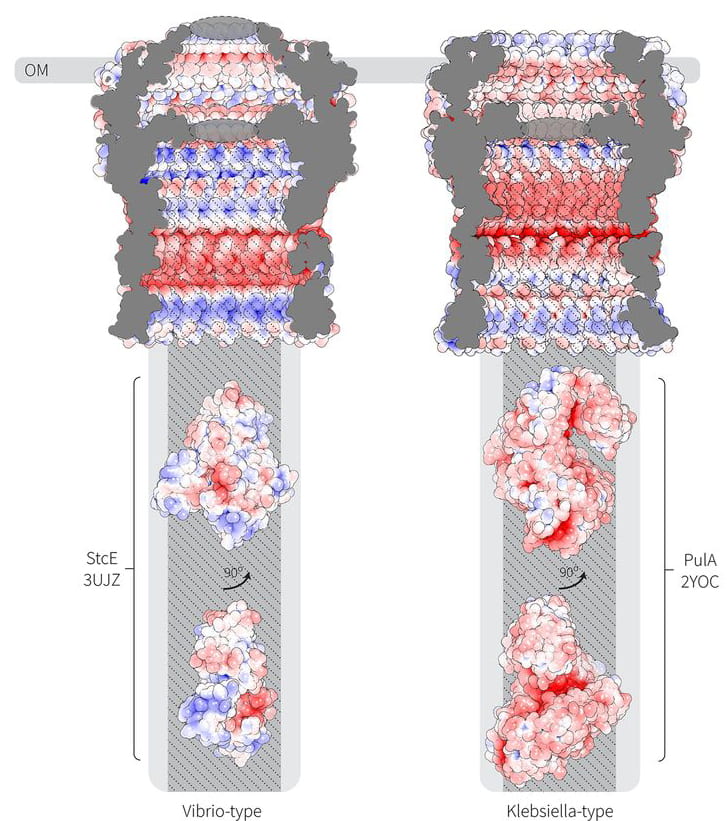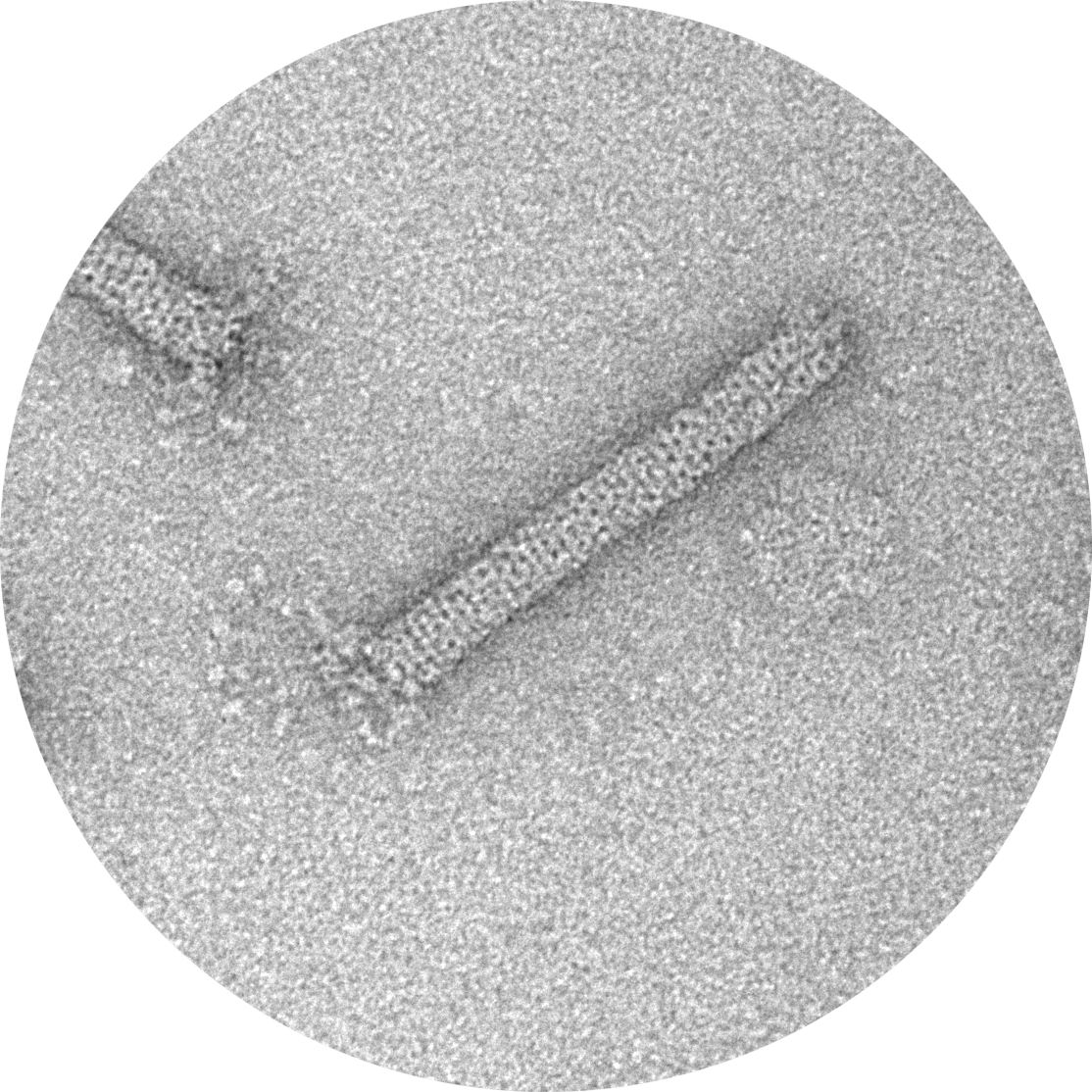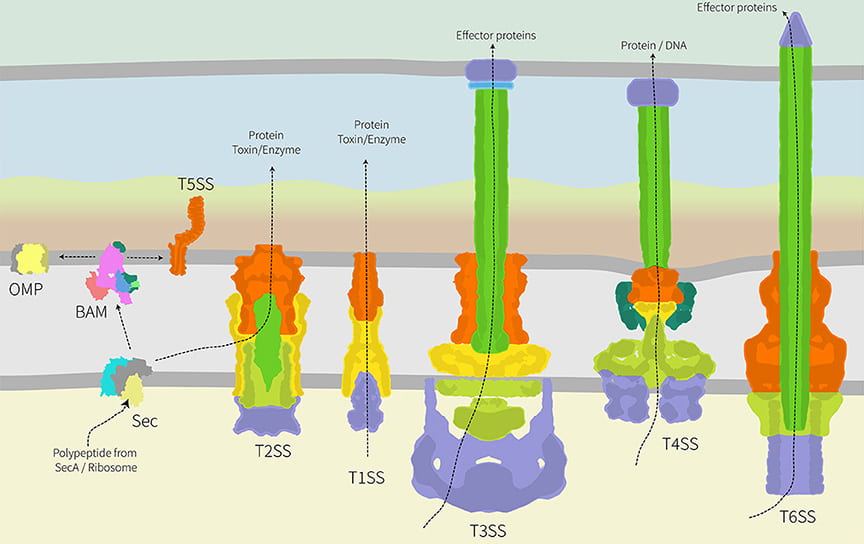Bacterial Cell Biology Lab
School of Biological Sciences | The University of AucklandResearch Themes
Bacterial T2SS substrate recruitment and secretion
The bacterial type two secretion system exports a wide range of exoproteins from the periplasm, commonly hydrolytic enzymes used to degrade host biopolymers (proteins, carbohydrates, lipids) for nutrient acquisition, but also far more nefarious virulence factors such as the Cholera toxin or Pseudomonas Exotoxin A. These substrates are incredibly diverse in their structure and function and do not possess a conserved “signal” sequence or motif. Exactly how they are selected from the hundreds of other proteins present in the periplasm is unknown.
We are trying to understand how these substrates are recruited and actively secreted by the T2SS nanomachine.


Bacterial polysaccharide secretion
Bacteria secrete a huge variety of polysaccharides which may be integral to the cell envelope or play additional protective roles through immune system evasion or biofilm formation. As such, these polysaccharides are commonly essential virulence factors for many human and agricultural pathogens.
Many unique carbohydrate polymerization and secretion molecular machines exist within the bacterial envelope. We are studying these systems’ diversity, structure, and function to better understand how they work with an overarching aim towards targeting them.
Phage assembly and secretion
We are interested in how phages are assembled and emerge from within bacterial cells. Some phage appear to self-assemble while others employ molecular machines to guide their assembly.
We employ a range of molecular biological and imaging techniques to try to visualise and understand these fascinating processes.


Phage targeting
Phage have evolved to only target specific bacteria (often restricted to a particular serotype or subspecies). This targeting is due to the phage virion receptor binding proteins targeting distinct proteins and carbohydrates presented on the surface of bacterial cells.
Furthermore, many phages possess enzymes in their virion that can specifically degrade many of the cell surface polysaccharides which would otherwise protect bacteria from predation.
We are studying the molecular mechanisms behind this specific recognition and enzymatic activities. We are also investigating the potential to expand the receptor/substrate range of these phage proteins.
Secretion system diversity and discovery
There is an incredible diversity seen in bacterial secretion systems – genetically, structurally, and functionally. Elements of these systems seem to evolve via the co-option and sharing of components from related systems involved in processes like motility, adhesion, conjugation, and injection.
We are interested in understanding how these components evolve to “work together” and also in identifying and investigating novel systems.
